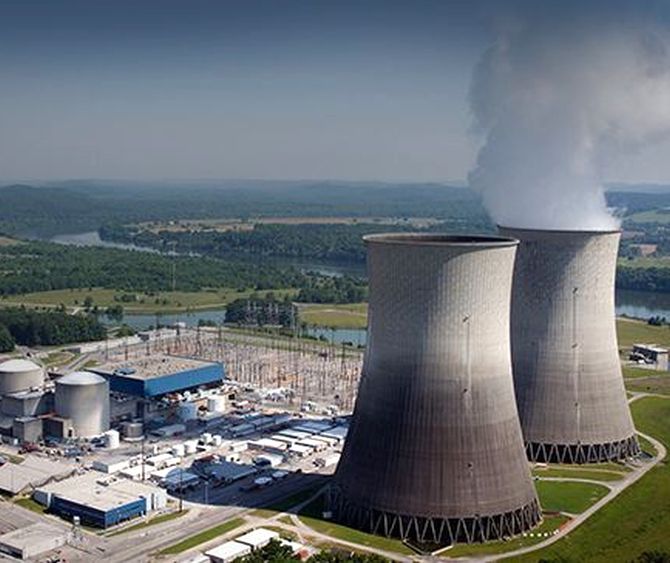Indigenously developed Unit-3 of Kakrapar Atomic Power Project (KAPP-3) in Gujarat's Surat district achieved its criticality, or its normal operating condition, for the first time on Wednesday, the Nuclear Power Corporation of India said.

KAPP-3, the country's 23rd nuclear power reactor, is a 700 MW Pressurised Heavy Water Reactor (PHWR) designed indigenously, the NPCIL said in a release.
The components and equipment for the reactor have been manufactured by Indian industries, and its construction was undertaken by various Indian contractors, it said.
It achieved its first criticality, or controlled self-sustaining nuclear fission chain reaction, at 9:36 hours on Wednesday, it said.
It is the frontrunner in a series of 16 indigenous 700 MW PHWRs which have received approval and financial sanction by the government and are at various stages of implementation, said the NPCIL, a PSU under the Centre's Department of Atomic Energy.
Prime Minister Narendra Modi lauded the achievement and said it was a 'shining example of 'Make In India' and 'a trailblazer for many such future achievements'.
'Congratulations to our nuclear scientists for achieving criticality of Kakrapar Atomic Power Plant-3! This indigenously designed 700 MWe KAPP-3 reactor is a shining example of Make in India. And a trailblazer for many such future achievements!' he tweeted.
Union Home Minister Amit Shah called it a 'big day in India's nuclear history'.
'Big Day in India's Nuclear history as indigenously designed 700 MWe Kakrapar Atomic Power Plant-3 in Gujarat achieved criticality. Nation salutes our scientists on this stellar achievement. New India is marching ahead to realise PM @NarendraModis vision of #AatmaNirbharBharat,' he tweeted.
'The reactors are designed and constructed to the highest safety and quality standards comparable to the best in the world. The indigenous 700 MW PHWRs have advanced safety features like steel lined inner containment, Passive Decay Heat Removal System, Containment Spray System, Hydrogen Management Systems, etc.,' NPCIL said.
'The fuel loading of the reactor core was completed by mid-March 2020. Thereafter, many tests and procedures were carried out during the lockdown period following all COVID-19 guidelines,' the NPCIL said.
Several contracting agencies, DAE units and various central and state authorities were involved in achieving the feat, it said.
'With this, various experiments/tests will be conducted and power will be increased progressively. Thereafter, it will be connected with the western grid. The unit is the 23rd nuclear power reactor of the country,' it said.
'NPCIL has even more reactors, KAPP 4 (700 MW), RAPP 7 and 8 (2X700 MW) and GHAVP 1 and 2 (2 X 700 MW) under construction. These reactors are expected to be completed and achieve criticality progressively from next year,' it said.











 © 2025
© 2025